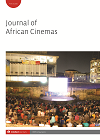
Full text loading...

The cinema as a medium and an art form has been a major consideration in Africa’s struggles against colonialism. These struggles, which encompass aspirations to establish Africa’s cultural and political autonomy in the postcolonial era, are ongoing. Marking the 26th edition of the Pan-African Festival of Cinema and Television (FESPACO) therefore was considered as an important opportunity for reflection. More so, the occasion was taken as a call to re-engage with the challenge of shaping and transforming ‘the Continent’s greatest cultural event’ for the future. The 2019 festival was launched around the colloquium theme: ‘Confronting our memory and shaping the future of a Pan-African cinema in its essence, economy and diversity’. This article begins with an account of the colloquium and reflects on the knowledge production dimension of the festival, which has been a core component of FESPACO’s identity and existence. It also seeks to situate the event of the 50th anniversary in a continuum of critical discussions about the festival, its past, present and future, and in relation to the seminal aspirations of African filmmakers for an African cinema, its challenges and opportunities.

Article metrics loading...

Full text loading...
References


Publication Date:
https://doi.org/10.1386/jac_00062_1 Published content will be available immediately after check-out or when it is released in case of a pre-order. Please make sure to be logged in to see all available purchase options.